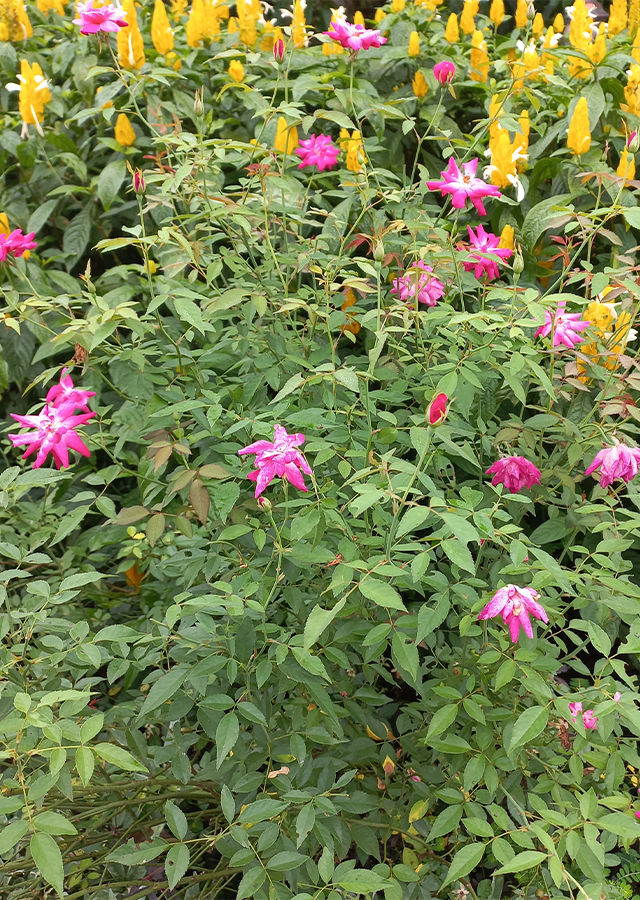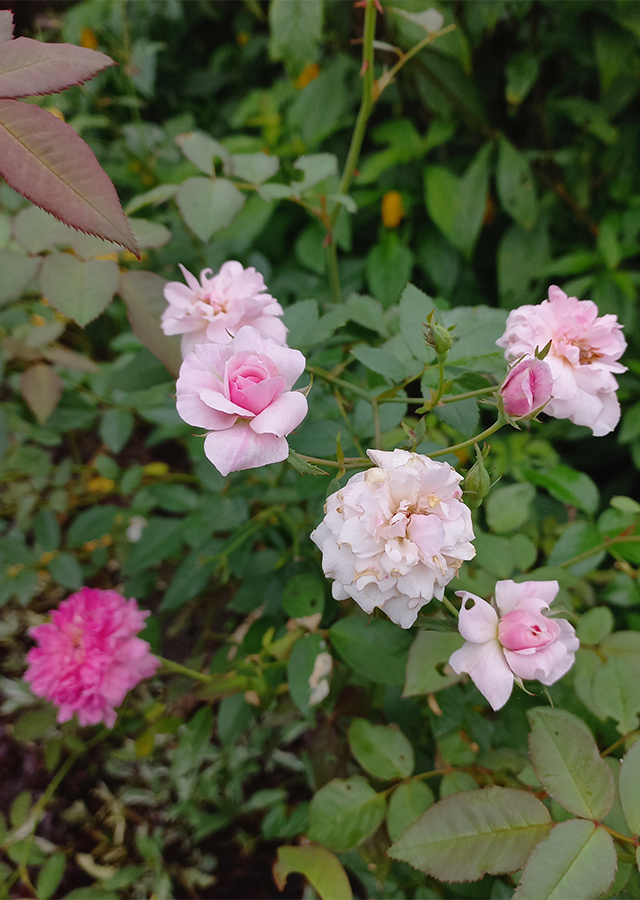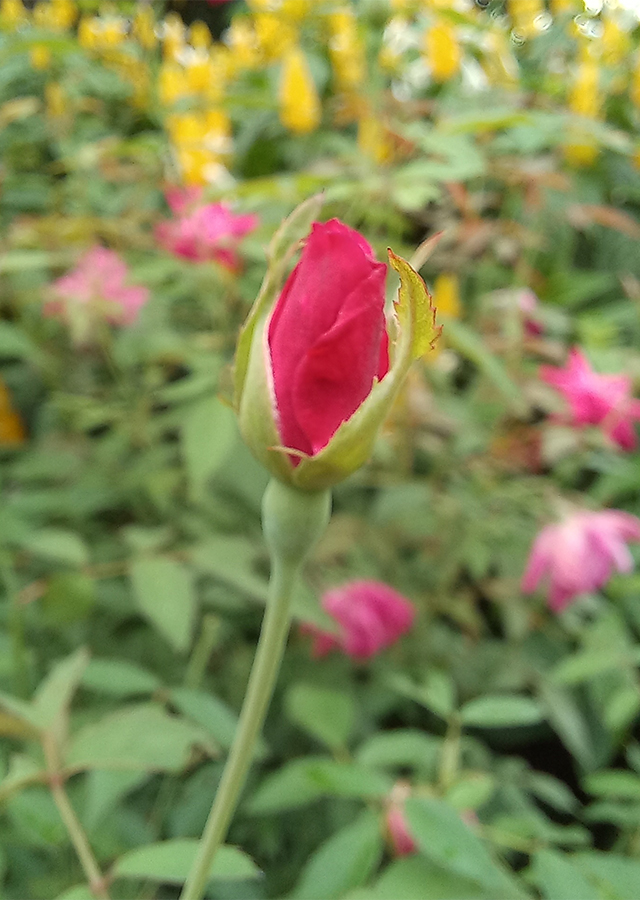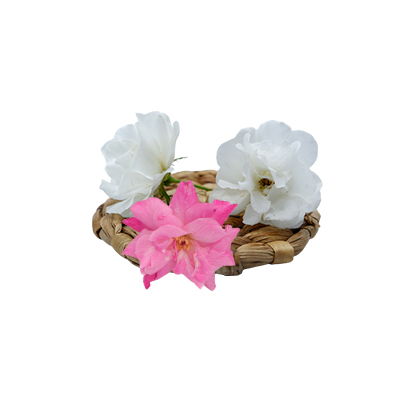Rose
Rosa L.
Rosaceae
Location in our garden
Principal



Synonym
Bakeria (Gand.) Gand.
Chabertia (Gand.) Gand.
Ernestella Germ.
Habitus
Shrubs. A woody perennial flowering plant
Part Used
Flowers
Roots
Growing Requirements
Full Sunshine
Habitat
Terrestrial
Overview
Most rose species are native to Asia, with smaller numbers being native to North America and a few to Europe and northwest Africa. Many roses are cultivated for their beautiful flowers, which range in colour from white through various tones of yellow and pink to dark crimson and maroon, and most have a delightful fragrance, which varies according to the variety and to climatic conditions. Roses have been cultivated for thousands of years, with centuries-old records of medicinal use. In ancient Persia, roses were cultivated and used as remedies.
Vernacular Names
Rosas (Philippines), Hoa hồng (Vietnamese), Méi guī hua (Chinese), Bara no hana (Japanese).
Agroecology
In tropical areas such as Indonesia, rose plants can grow and flower productively in the lowlands to high (mountains), an average of 1500 m above sea level. Rainfall for the growth of a good rose is 1.500 - 3.000 mm / year. Its growth requires cool air temperatures ranging from 18 - 26 °C and humidity of 70 - 80%, as well as loose and humus-rich soil with soil acidity (pH) between 5.5 - 6.8. Prefers areas with plenty of sunlight (5 - 6 hours per day) and doesn't like stagnant water.
Morphology
- Stems - woody and have prickles growing along the stems.
- Leaves - pinnately compound and are arranged alternately along the stems. The leaflets are ovate with a serrate margin.
- Flowers - solitary, fragrant flowers range in colour from red, orange, pink and white with multiple petals.
- Fruits - The plant produces an aggregate fruit (hip), formed from the fleshy receptacle. Each fruit is an achene, a type of dry fruit.
Cultivation
- By plant division and layering (for hardwood species).
- By seeding (as for all species giving grains).
- By "in vitro" propagation: a very short time, 1 to 2 months instead of 12 to 18 months with upper methods.
Chemical Constituents
Tannins, geraniol, nerol, geranic acid, terpenes, flavonoids, polyphenol pectin, vanillin, carotenoids, stearopten, farnesol, phenylethylacohol, -damascenone, quercitrin, and essential oils (citronellol, eugenol, gallic acid, and linalool).
Traditional Medicinal Uses
- Medicinal tea can be made from rose hips, petals, leaves, or combinations. Petals and leaves brewed as a tea can bring down a fever. Petal and leaf tea has a cleansing effect, working as a diuretic to flush toxins from the body. Drinking rose petal tea can help alleviate skin rashes. The flavonoids in rose petal tea can boost the immune system’s natural ability to fight colds and flu. Rose teas can relieve bronchial and chest congestion, provide relief from a sore throat, and can help with a runny nose.
- A 19th century recipe for herbal rose tea is to boil 4 cups of water and steep 5 tsp. of rose petals in it for 5 to 10 minutes. Add honey as a sweetener, and drink while still warm.
- Rosewater is made from pure rose oil and water, and is used for skin treatments to smooth and moisturize the skin, and to relieve skin irritations. Rosewater has antiseptic properties and is sometimes used as an eye wash to treat eye irritation. Use rosewater as an after-bath skin refresher.
- For dermatological use, pure rose oil should be blended with a light carrier oil such as almond or sesame. The recommended ratio is 8 drops of rose oil per 10ml of carrier. Apply it directly to the skin in small doses.
- The bioflavonoids in rose hips have been shown to provide pain relief for people who have osteoarthritis. Studies in Denmark indicated a decrease in patients’ need for other anti-inflammatory drugs when they took powdered rose hips over a three- to four-month period.
Part Used
Reference Sources
- Flora & Fauna Web. (2020). Rosa. https://www.nparks.gov.sg/florafaunaweb/flora/5/0/5058. 02-11-21.
- Britannica. Rosa. https://www.britannica.com/plant/rose-plant. 02-11-21.
- Fischer, Fern. Medicinal Value of Rose Plant. (2017). Rosa. https://www.gardenguides.com/89951-medicinal-value-rose-plants.html. 02-11-21.
- Bousselin, Francois. Rose Propagation. https://www.ndsu.edu/pubweb/chiwonlee/plsc368/student/papers03/fbousselin/ rosepropagation.htm. 02-11-21.



